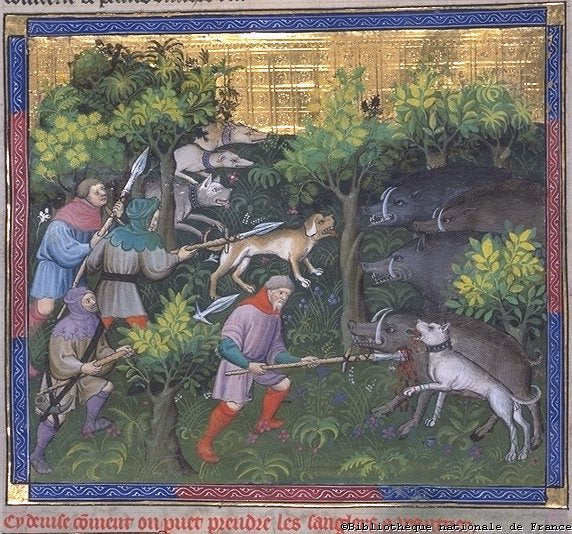The main point is that historians have to publish to live and media love sensational stories over plain facts
Yeah, I thought the hollow point thing was silly and sensationalistic. It's basically a spear point that's designed to come off inside the animal, and maybe a shaft that's meant to come apart and create multiple wound channels? I wasn't completely clear on what they were getting at with that.
How do you control when the point comes detached.
How much penetration do you get once the point comes loose?
But I could see some situations where bracing the pike to stop a charge would be advantageous, similar to how boar spears were sometimes used.
that's what they said but actually I'm not sure it's true
Looking at a wild boar moving you instantly notice that the beast is fast. And I mean very fast.
It's also not that tall and viewing from the front it's quite narrow and you can almost see nothing but his head
if you put the rear of your spear into the ground your spear would have a very small angle with the terrain to be effective almost forcing you into a kneeled position and with the risk of slipping away.
Securing your spear into the ground and aiming while in such position is pretty unlikely
If you look at all the boar painting from the past they show man holding the spear in "regular" position



